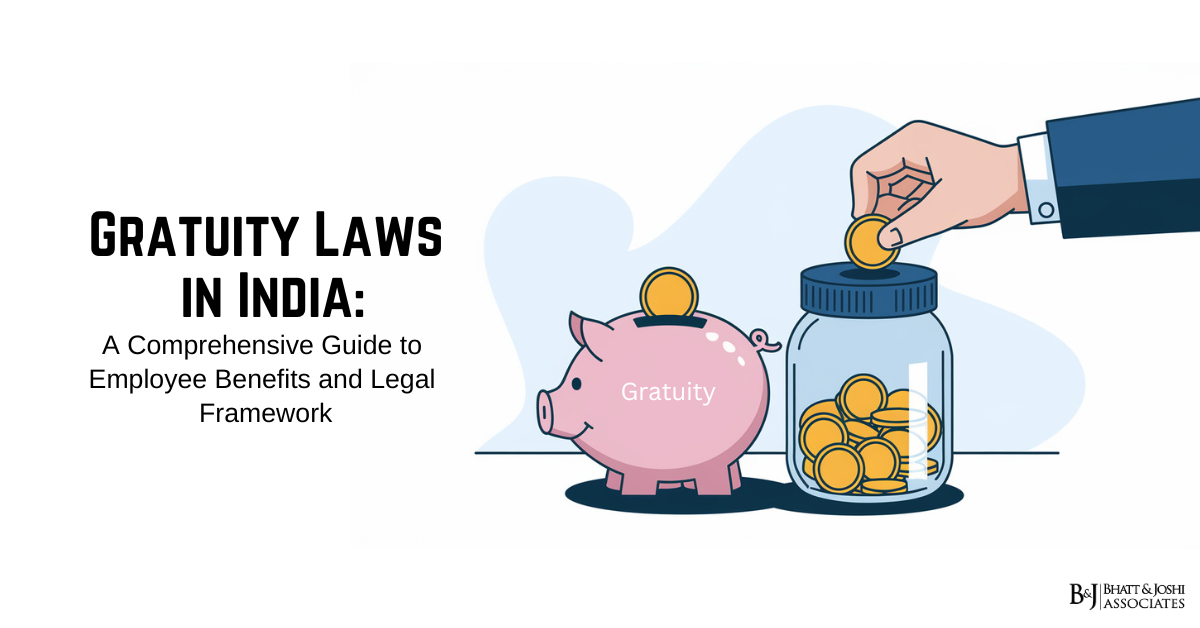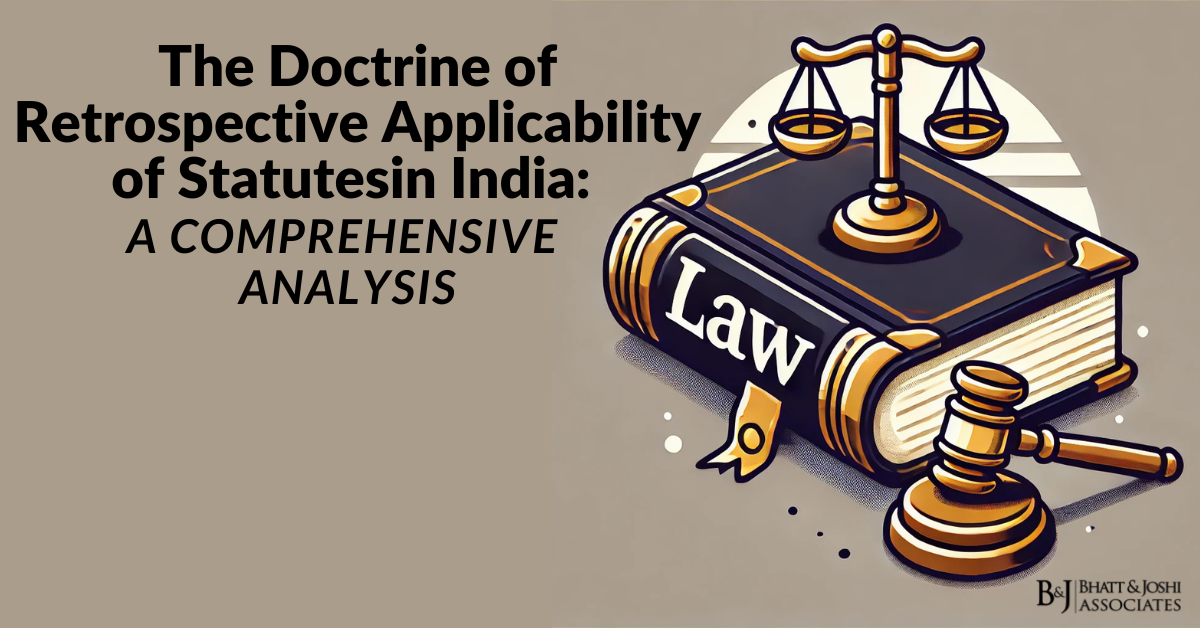Introduction
Gratuity is a crucial component of the compensation package provided to employees in India, serving as a financial reward for long-term service and loyalty to an employer. It is one of the few benefits in the Indian labor landscape that offers employees a lump sum payment upon the completion of a specified period of service, thereby acting as a form of social security. The Payment of Gratuity Act, 1972, governs the rules and regulations related to gratuity payments in India, ensuring that employees receive a monetary benefit upon leaving employment. The Payment of Gratuity Act, 1972, is a vital piece of legislation that reflects the importance of employee welfare in the Indian legal system. However, the application and interpretation of gratuity laws have evolved over the years, with various judicial pronouncements and amendments shaping the current legal framework. This article delves into the intricacies of gratuity laws in India, exploring the historical context, key provisions, judicial interpretations, challenges in implementation, and the future of gratuity regulations.
Historical Context and Legislative Background of the Payment of Gratuity Act 1972
The concept of gratuity has its roots in the traditional Indian practices of rewarding employees for their loyalty and long-term service. However, before the enactment of the Payment of Gratuity Act, 1972, gratuity payments were not mandatory and were often left to the discretion of employers. This led to widespread disparities in the provision of gratuity benefits, with many employees receiving little or no gratuity despite years of dedicated service. The need for a statutory framework to regulate gratuity payments became evident during the post-independence period when India was witnessing rapid industrialization and the growth of organized labor. The Payment of Gratuity Act, 1972, was enacted to address these concerns and to provide a uniform framework for the payment of gratuity to employees across various sectors. The Act was designed to ensure that employees received a fair and equitable gratuity payment upon retirement, resignation, or termination, thereby promoting social security and employee welfare.
The enactment of the Payment of Gratuity Act was a significant milestone in Indian labor law, as it recognized the importance of gratuity as a right rather than a privilege. The Act has since become a cornerstone of employee benefits in India, providing financial security to millions of workers and their families.
Key Provisions and Objectives of the Payment of Gratuity Act, 1972
The Payment of Gratuity Act, 1972, applies to all establishments with ten or more employees, including factories, mines, oilfields, plantations, ports, railways, shops, and establishments. The Act aims to provide a statutory right to gratuity for employees who have rendered continuous service for a specified period. The key provisions and objectives of the Act are as follows:
- Eligibility for Gratuity
Under the Act, an employee becomes eligible for gratuity if they have completed at least five years of continuous service with an employer. Continuous service is defined as uninterrupted service, which includes periods of leave, absence due to sickness, accident, layoff, strike, or lockout, provided these interruptions are not caused by the employee’s fault.
- Calculation of Gratuity
The amount of gratuity payable to an employee is calculated based on their last drawn salary and the number of years of service completed. The formula for calculating gratuity is:
Gratuity = (Last Drawn Salary × 15 × Number of Years of Service) / 26
Here, the last drawn salary includes basic salary and dearness allowance, and the number of years of service is rounded off to the nearest full year. For example, if an employee has completed 7 years and 6 months of service, the service period is considered as 8 years for gratuity calculation.
- Maximum Limit on Gratuity
The Act initially set a maximum limit on the amount of gratuity payable to an employee. However, this limit has been revised periodically through amendments to reflect inflation and changes in the cost of living. As of the latest amendment, the maximum gratuity payable under the Act is Rs. 20 lakh. Any amount paid beyond this limit is at the discretion of the employer.
- Payment of Gratuity
Gratuity must be paid within 30 days from the date it becomes due. If the employer fails to pay the gratuity within this period, they are liable to pay interest on the delayed payment at the rate prescribed by the government. The Act also provides for the payment of gratuity in cases where an employee is terminated due to misconduct, but the employer has the right to forfeit the gratuity if the misconduct involves moral turpitude or loss to the employer.
- Nomination of Gratuity
The Act requires employees to nominate a person or persons to receive their gratuity in the event of their death. The nomination can be made at any time after joining employment and can be modified as needed. If an employee fails to nominate a beneficiary, the gratuity is paid to their legal heirs.
- Penalties for Non-Compliance
The Act prescribes penalties for employers who fail to comply with its provisions. This includes fines and imprisonment for willful default in the payment of gratuity. The Act also provides for the appointment of controlling authorities to oversee the implementation of the Act and to resolve disputes related to gratuity payments.
Judicial Interpretations and Landmark Judgments
Over the years, the judiciary has played a crucial role in interpreting the provisions of the Payment of Gratuity Act, 1972, and in shaping the legal landscape of gratuity laws in India. Several landmark judgments by the Supreme Court and High Courts have clarified the scope and application of the Act, particularly in cases involving disputes over gratuity payments.
- Continuous Service and Eligibility for Gratuity
One of the most significant judicial interventions in this area was the Supreme Court’s ruling in the case of Mettur Beardsell Ltd. v. Regional Labour Commissioner (1996), where the Court clarified the definition of continuous service under the Act. The Court held that even if an employee has not actually worked on all days during the year, they are still considered to have rendered continuous service if they were employed by the employer and were ready to work, except in cases of unauthorized absence.
- Calculation of Gratuity for Daily Wage Workers
In the case of Lallah Ramsaran Das v. Labour Commissioner, Bihar (1978), the Supreme Court addressed the issue of gratuity calculation for daily wage workers. The Court ruled that the calculation of gratuity for daily wage workers should be based on the average of their last three months’ wages, including all allowances. This judgment ensured that daily wage workers received a fair and equitable gratuity payment, similar to regular employees.
- Forfeiture of Gratuity for Misconduct
The Supreme Court’s ruling in the case of Union Bank of India v. C.G. Ajay Babu (2018) clarified the conditions under which an employer can forfeit an employee’s gratuity for misconduct. The Court held that gratuity can only be forfeited if the misconduct involves moral turpitude or causes financial loss to the employer. The Court also emphasized that the decision to forfeit gratuity must be based on a fair and transparent inquiry process.
- Applicability of Gratuity to Contract Workers
The applicability of the Payment of Gratuity Act to contract workers has been a contentious issue in Indian labor law. In the case of Oil and Natural Gas Corporation Ltd. v. Commission for Gratuity Payment (2000), the Supreme Court ruled that contract workers who are engaged in continuous service with a principal employer and who meet the eligibility criteria under the Act are entitled to gratuity payments. This judgment expanded the scope of the Act and ensured that contract workers received the same benefits as regular employees.
Challenges in Implementation and Compliance
Despite the comprehensive legal framework provided by the Payment of Gratuity Act, 1972, its implementation has faced several challenges. One of the primary challenges is the lack of awareness among employees about their rights under the Act. Many employees, particularly those in the unorganized sector, are unaware of their entitlement to gratuity, leading to a situation where they do not claim the benefit even when they are eligible. Another significant challenge is the non-compliance by employers, particularly in the unorganized and informal sectors. Many employers either fail to pay gratuity or delay the payment, resulting in financial hardship for employees. The lack of effective enforcement mechanisms further exacerbates this issue, as the penalties prescribed under the Act are often not stringent enough to deter non-compliance.The process of calculating and disbursing gratuity can also be complex, particularly for employees with irregular work patterns or those who have worked for multiple employers. The lack of a centralized system for tracking an employee’s service history and calculating gratuity entitlements can lead to discrepancies in the payment of gratuity. Moreover, the cap on the maximum gratuity payable under the Act has been a subject of debate, particularly in the context of inflation and the rising cost of living. While the cap has been periodically revised, there is a growing demand for removing or increasing the cap to ensure that employees receive a gratuity amount that reflects their years of service and contributions to the employer.
The Role of Employers and Human Resource Practices
Employers play a crucial role in the implementation of the Payment of Gratuity Act, 1972. Ensuring compliance with the Act requires a proactive approach from employers, particularly in maintaining accurate records of employees’ service history and calculating gratuity entitlements. Human resource (HR) practices must be aligned with the legal requirements of the Act to ensure that employees receive their gratuity benefits in a timely and accurate manner. One of the key HR practices that can facilitate compliance with the Act is the regular updating of employee records, including their date of joining, last drawn salary, and periods of leave or absence. Employers should also ensure that they have a clear and transparent process for calculating gratuity and that employees are informed about their entitlements under the Act. Employers can also play a role in raising awareness about gratuity laws among employees. This can be done through orientation programs, training sessions, and communication campaigns that inform employees about their rights and the procedures for claiming gratuity. By fostering a culture of transparency and accountability, employers can ensure that employees are aware of their entitlements and are able to claim their gratuity without difficulty.
The Impact of Economic Liberalization and the Gig Economy
The economic liberalization of the Indian economy in the early 1990s brought significant changes to the labor market, with profound implications for gratuity laws. The shift towards a market-oriented economy led to the growth of the private sector and the rise of new forms of employment, including temporary and contract work. This posed new challenges for the implementation of the Payment of Gratuity Act, particularly in ensuring that employees in non-traditional work arrangements received their gratuity benefits. The rise of the gig economy has further complicated the implementation of gratuity laws. Gig workers, who are often classified as independent contractors rather than employees, are typically not covered by the Payment of Gratuity Act. This has led to a situation where a growing segment of the workforce is excluded from the benefits provided by the Act, raising concerns about social security and employee welfare. There is a growing recognition of the need to extend the coverage of gratuity laws to include gig workers and other non-traditional employees. This could involve amending the Payment of Gratuity Act to broaden the definition of “employee” and to include workers in the gig economy. Such reforms would ensure that all workers, regardless of their employment status, have access to the financial security provided by gratuity.
The Need for Reform and Future Directions
While the Payment of Gratuity Act, 1972, has been instrumental in providing financial security to employees in India, there is a growing recognition that the Act needs to be reformed to address the challenges of the contemporary labor market. One of the key areas for reform is the need to extend the coverage of the Act to include workers in the informal sector and the gig economy. This would ensure that all workers, regardless of their employment status, have access to gratuity benefits. Another area for reform is the need to simplify the process of calculating and disbursing gratuity. The current system can be complex and time-consuming, particularly for employees with irregular work patterns or those who have worked for multiple employers. The introduction of a centralized system for tracking an employee’s service history and calculating gratuity entitlements could help to streamline the process and reduce discrepancies in the payment of gratuity. There is also a need to address the issue of the maximum gratuity limit under the Act. While the cap on gratuity has been periodically revised, there is a growing demand for removing or increasing the cap to ensure that employees receive a gratuity amount that reflects their years of service and contributions to the employer. This would ensure that employees are adequately compensated for their long-term service and loyalty. Finally, there is a need for greater awareness and education about gratuity laws among employees and employers. Many employees are unaware of their rights under the Payment of Gratuity Act, leading to a situation where they do not claim their gratuity even when they are eligible. Employers, on the other hand, may not fully understand their obligations under the Act, leading to non-compliance and delays in the payment of gratuity.
Conclusion: Evaluating the Payment of Gratuity Act 1972
The Payment of Gratuity Act, 1972, is a landmark piece of legislation that has played a crucial role in providing financial security to employees in India. It represents a commitment to employee welfare and social security, ensuring that employees receive a fair and equitable gratuity payment upon the completion of their service. However, the Act is not without its challenges. The changing dynamics of the labor market, the rise of the gig economy, and the growing demand for flexibility in employment have created new challenges for the implementation of the Act. There is a need for reform to ensure that the Act remains relevant and effective in providing financial security to all workers, regardless of their employment status. By addressing these challenges and building on the strengths of the Act, India can move closer to realizing the vision of a fair and just labor market where all workers are treated with dignity and respect. The Payment of Gratuity Act is not just a legal document; it is a promise to the millions of workers in India that their rights will be respected, and their livelihoods will be secured. As the country moves forward, it is essential to ensure that this promise is fulfilled, and that employees are empowered to live with dignity and economic security.














